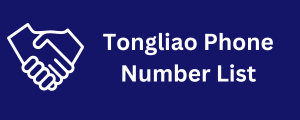Have you ever stared at a phone number
with a mix of curiosity and confusion? You’re not alone. International phone numbers can appear daunting at first glance. However, beneath the seemingly complex surface lies a surprisingly straightforward system. This guide removes the mystery and empowers you to understand and utilize phone numbers confidently, enabling effortless global communication.
The Core System: A Simple and Universal Foundation
International phone numbers rely on a basic two-part structure:
- Country Code: This unique three-digit code identifies the specific country a phone number belongs to. (e.g., +1 for the United States, +44 for the United Kingdom)
- Local Phone Number: The specific 8-digit phone number assigned to a phone line within that particular country.
Think of it like an address.
The country code acts like the country name, and the local phone number functions like the street address and house number within that country.
Example: A phone number like +49 157 888 1234 indicates a phone line in Germany (+49). The remaining digits (157 888 1234) represent the unique phone number within Germany.
Making the Connection: Putting the System into Action
Connecting with someone internationally involves a simple process:
- Dial the International Access Code: This code varies depending on your calling country. For example, it’s 011 in the US and Canada. This code instructs your phone carrier to route the call internationally.
- Dial the “+” Symbol: This Tokelau Email List signifies that the following digits represent a country code.
- Dial the Country Code: Enter the relevant three-digit code for the country you’re calling (e.g., +49 for Germany).
- Dial the Local Phone Number: This is the specific 8-digit phone number you’re trying to reach within the destination country.
Example: To call the number mentioned earlier from the US, you would dial 011 (international access code) + 49 (country code) + 157 888 1234 (local phone number).
Beyond the Basics: Nuances to Consider
While the core system provides Understanding Mobile Phone Plans: A a strong foundation, understanding these points will further enhance your international calling experience:
- Area Codes: Some countries, like the US and Canada, utilize area codes within their local phone numbers. These additional digits identify a specific geographic region within the country.
- Mobile Phone Numbers: Mobile phone numbers might have slightly different formats depending on the country. Always check the format before dialing.
- Calling Costs: International calls can incur significant charges. Familiarize yourself with your calling plan’s international rates before dialing.
- Alternative Communication Methods: Communication apps like WhatsApp or Viber offer free or low-cost calling options when connected to Wi-Fi.
Conclusion: Unlocking the World with Confidence
International phone numbers, with their core system of country codes and local phone numbers, become surprisingly straightforward once understood. By demystifying the code, you’re equipped to navigate global communication with ease. So next time you need to connect with someone across borders, remember the simple system, utilize the handy tips, and embrace the world of possibilities that awaits!



